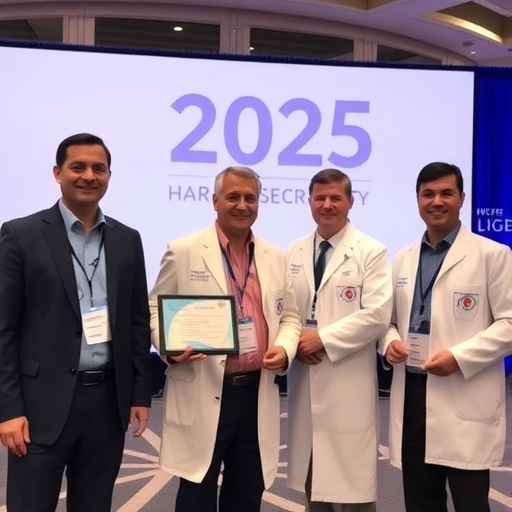CHICAGO (March 9, 2018): For many years, people who sustained severe burn injuries often died. But great strides in burn care over the last 30 years have dramatically increased their chances of survival, according to new study findings published as an "article in press" on the Journal of the American College of Surgeons website ahead of print publication.
"Mortality has decreased three to fivefold since the 1980s, ostensibly from the substantial advances in burn care that occurred between 1980 and 1989," said lead study author David N. Herndon, MD, FACS, chief of staff and director of research at the Shriners Hospitals for Children, Galveston, and director of burn services at the University of Texas Medical Branch (UTMB). "Yet, until now, there has never been a definitive study showing the cumulative effect of these advances on survival."
Burns are one of the leading causes of unintentional death and injury in the U.S., according to the American Burn Association.* Very large burns–those that cover 50 percent or more of the body's surface area–put people at high risk of infection and death. In addition to burn size, old age, female gender, and damage to lungs due to the inhalation of smoke put people at greater risk of death.
This is the most definitive report of the role advanced burn treatment has played in reducing risk of death, the authors said. Dr. Herndon and colleagues examined the records of 10,384 adult and pediatric burn patients admitted to Shriners Hospitals for Children®, Galveston, or the Blocker Burn Unit in Galveston from 1989 to 2017. Over this time period, protocols directly derived from these advances were used to guide care of these patients.
The researchers applied multivariate regression analysis to create a statistical profile of their burn patients and to identify the main factors associated with mortality. Factors such age, sex, burn size, whether the patient suffered smoke inhalation injury (damage to the airways), and length of stay were collected at admission.
Of the 10,384 burn admissions, a total of 355 victims died. The researchers looked specifically at the main factors that influenced risk of death in different age groups and then created a risk prediction model.
Using mortality data from the medical literature, as well as data from the National Burn Repository, the researchers compared historical predictions of mortality risk with their observed patient data. They found a significant decrease in mortality in their patient population compared with historical predictions from previous studies.
"In this one area of medicine, these new protocols have massively reduced mortality overall," Dr. Herndon said. "Over the last 30 years at our burn center there has been a continuing reduction in the risk of mortality of about 2 percent per year in all age groups, burn sizes, and genders."
The study also identified the most powerful predictors of mortality: the percent of total body surface burned, age, and the presence of inhalation injury. The probability of death rose as age increased, as burn size increased, and with the presence of inhalation injury.
The data suggest that the continuous improvement in mortality over time is a result of changes in the standard of care, including protocols for management of inhalation injury; nutrition to combat infection and aid in healing; and receiving early burn excision and skin grafts immediately following injury.
"The most dramatic decreases in mortality most recently have been in patients over age 40," Dr. Herndon said. "Remarkably, a patient up to the age of 40 who has sustained a 95 percent body burn now survives half the time, whereas in earlier times a 50 percent body burn killed that same person."
Other factors not assessed in the study that have contributed to better outcomes in burn patients include improvements in the transfer of critically ill patients to hospitals and burn centers.
"We hope our findings will inspire other burn units to try to keep people alive with extensive burns because it's clear that it can be done. Burn specialists also need to focus on implementing the protocols that have allowed this improvement in survival to occur," Dr. Herndon said. "For example, a woman over the age of 40, with very large burns, is a patient who can survive today if these protocols are implemented."
Beyond the effort to reduce mortality rates in burn victims, researchers hope to concentrate on better treatment strategies to improve quality of life. "Our priorities for future advancements need to focus on decreasing scar tissue and morbidity, effective rehabilitation, and returning patients to work," Dr. Herndon said.
###
The study's coauthors are Karel D. Capek, MD; Linda E. Sousse, PhD; Gabriel Hundeshagen, MD; Charles D. Voigt, MD; Oscar E. Suman, PhD; Celeste C. Finnerty, PhD; and Kristofer Jennings, PhD.
* National Burn Awareness Week. American Burn Association. Available at: http://ameriburn.org/wp-content/uploads/2018/01/aba_infographic_011918.pdf. Accessed March 2, 2018.
Citation: Contemporary Burn Survival. Journal of American College of Surgeons. Available at: http://www.journalacs.org/article/S1072-7515(18)30026-7/abstract .
About the American College of Surgeons
The American College of Surgeons is a scientific and educational organization of surgeons that was founded in 1913 to raise the standards of surgical practice and improve the quality of care for all surgical patients. The College is dedicated to the ethical and competent practice of surgery. Its achievements have significantly influenced the course of scientific surgery in America and have established it as an important advocate for all surgical patients. The College has more than 80,000 members and is the largest organization of surgeons in the world. For more information, visit http://www.facs.org.
Media Contact
Devin Rose
[email protected]
http://www.facs.org




